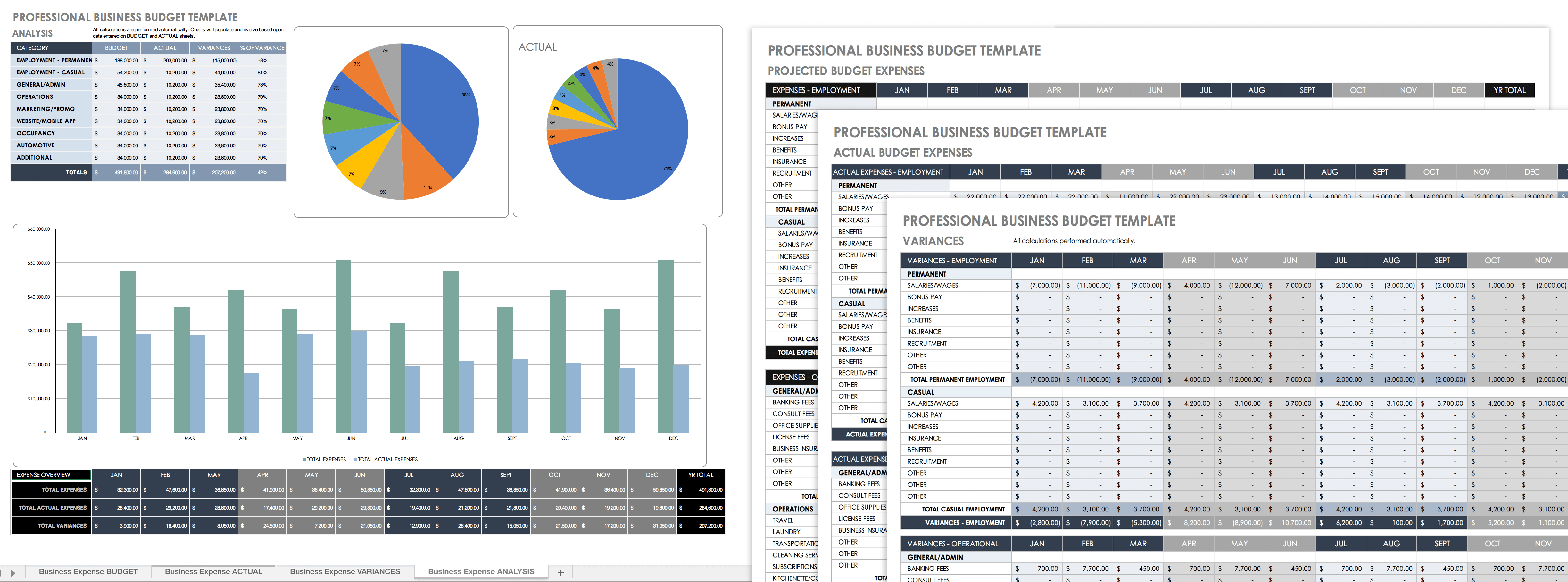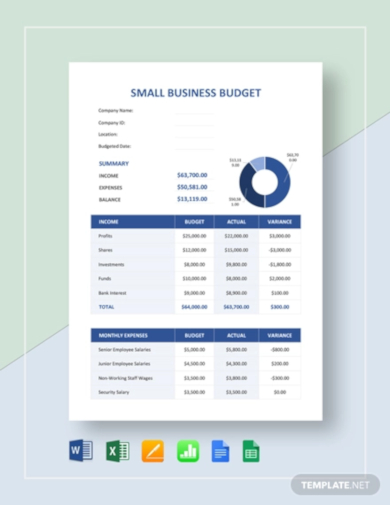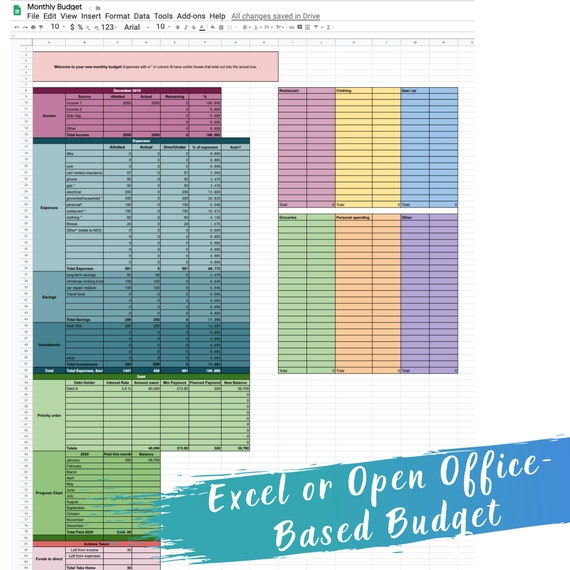
What is a business budget template, and how do you choose one? When choosing accounting software, see if it has that capability.
BUSINESS BUDGET TEMPLATE FOR NUMBERS SOFTWARE
Go through them with a trusted friend or colleague to determine if they are all truly essential to start your business.ĭid you know? Many of the best accounting software solutions can help with your business budgets. You can also reevaluate your essential costs if you cannot get your budget to balance. Determine if any of them are unnecessary, at least while you're starting out, and can be cut. Is there anything you can cut out or move to the "later" category? Can you reduce the cost of any items by, say, buying something secondhand or trading labor? Start by going through your nonessential startup items. Now that you have some rough numbers to work with, it's time to tighten them up to make your budget more actionable. To create your safety net, add 10% of each expense in your startup budget, and add 15% of your monthly operating costs. Think of this money like a vehicle's airbags they're used only in a true emergency.

Build some financial padding into your budget to cover you in the event of unexpected costs. It is easier to do than many think, given the unpredictable nature of starting a business. Many small business owners exceed their budgets. It can be difficult to forecast your income when starting out, so begin with the number you will need to hit to break even, and then use that number to come up with an educated guess. Next, estimate how many months you will go without revenue. These are things you will need to pay for more than once that are not tied to your business's product or service, such as subcontractors, payroll, software subscriptions, website fees, rent and advertising fees. Start by calculating your estimated monthly overhead costs. Losses are a result of a new business needing time to build a customer base, and your budget must reflect them. Your losses are how long you will go without turning a profit while accumulating overhead expenses. Add up your essential and nonessential items to get your estimated startup costs. Later items are things that you can put off for at least six months and are not required for the function of your business, like a fresh coat of paint for your building. This can be subjective, but try to look at your business as a whole and use your best judgment.įYI: An example of a nonessential item would be a professionally designed logo or website. Nonessential items are things that will make your life easier but are not crucial to the operation of your business. Next, categorize each item as "essential," "nonessential" or "later." Essential items, as the name suggests, are purchases that are crucial to getting your business off the ground, such as a business license. For example, to build a website, you will need to pay for a designer, host, domain name, plugins, stock photos and security software. Be specific and write down the exact costs of every item you will need to purchase and any associated costs. This could include things like a building (if you're buying, not renting), computers and photography equipment. Begin with your startup costs, which are any one-time expenses related to starting your business.

Categorize your expenses.įor this step, start by brainstorming all of your potential expenses on a budget worksheet. How much makes sense for you to spend? Keep in mind that loans must be paid back, often with interest, and you must not deplete your personal savings. To set your goal, consider the amount of money you currently have or can realistically obtain. This helps you establish clear parameters for your budget from the beginning and keep your spending in check. Your budget goal is the total amount you are willing to spend on your business. Here are five steps to help you create a startup budget so you can start your business off on the right foot. This is especially important if you're planning to apply for a small business loan to help you launch your business.

Still, it's something you need for your business plan. If your business is new or still in the planning stages, creating a budget is tricky – even with a template – because you don't have actual numbers to plug in. How do you create a startup business budget?

It also shows how much money you will need to make to continue making a profit and satisfy your expenses. At its most basic level, it is a document that shows how much money you have coming in and what you need to spend money on. A business budget can take multiple forms. In fact, you'll probably need one as part of your business plan. Creating a budget for your business may seem like a daunting task, but it's a vital step in your business's development.


 0 kommentar(er)
0 kommentar(er)
